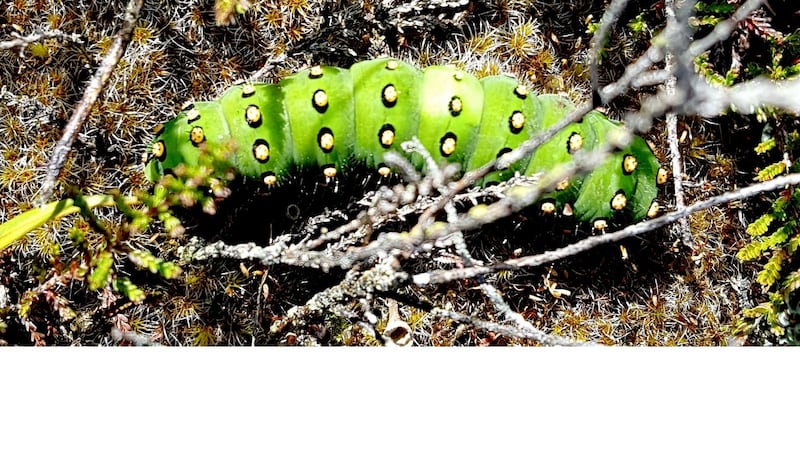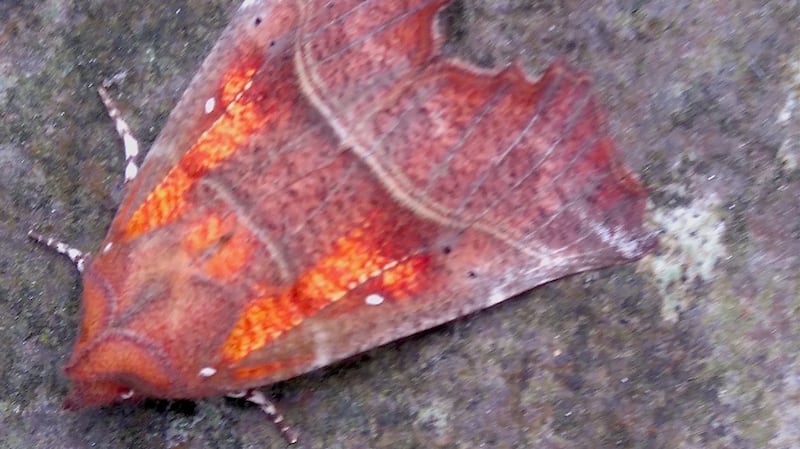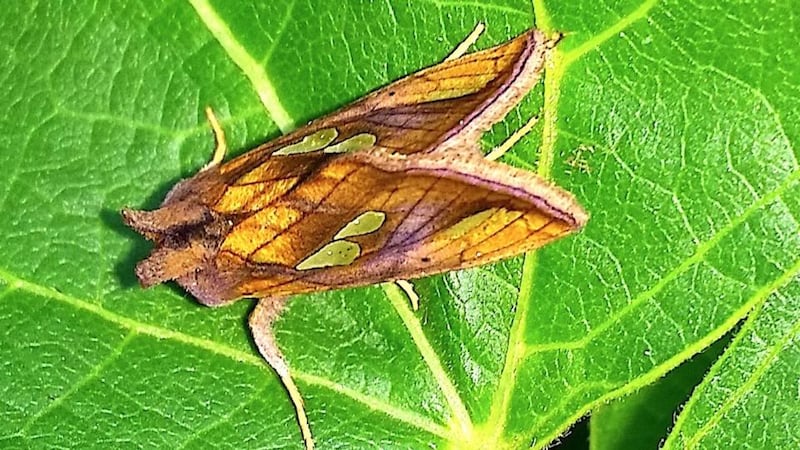I watched a hoverfly harass a bumblebee on a flower until it moved off. The hoverfly then followed it until it left the area. My daughter, Lucy, found this caterpillar on a nature walk. I think it belongs to the drinker moth.
Albert Nolan, Newport, Co Tipperary

Male hoverflies are very territorial. And yes, it is the caterpillar of the drinker moth, which gets its name from sipping dewdrops.
I found this creature on a drying bog on the Meath/Westmeath border.
Mike Egan, Ballivor, Co Meat
It is the caterpillar of the emperor moth.
I spotted this fluffy growth, like candy floss, on a briar on the bank of the Royal Canal near Maynooth.
Michael Quinn, Maynooth, Co Kildare
It is the bedeguar gall, also called robin’s pincushion. It is caused by the gall wasp Diplolepsis rosae, which lays its eggs on wild roses and briars.
This photograph was taken at Portmagee -Lomanagh, Co Kerry.
Ann Meade, Knocklyon, Dublin 16
It is a young puss moth caterpillar. It will change colour from blackish/brown to green when it matures, but the saddle will remain the same colour.
I found this moth in a curtain in a Kilkenny house.
Rosalie Prendercast, Ballyogan, Co Kilkenny

It is the herald moth. They fly from August to September and sometimes come into houses.
This moth with lovely lattice pattern and silvery teardrop markings was on my runner beans.
Aidan Gribben, Ferns, Co Wexford

It is the gold spot moth.
Hundreds of these caterpillars have eaten away most of this plant.
Margaret Mason, Finglas, Dublin 11
They are the larvae of the birch sawfly, a dreadful pest in the garden.
Ethna Viney welcomes observations and photographs at Thallabawn, Louisburgh, Co Mayo, F28 F978, or by email at viney@anu.ie. Please include a postal address.











